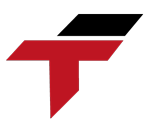In the modern era of automation, actuators play a pivotal role in translating control signals into mechanical movements. As the backbone of various industries, actuators ensure seamless operations in everything from manufacturing to everyday household devices. This article delves into the usage, features, principles, types, and pricing of actuators to give you a comprehensive understanding of this essential component.
What is the Actuator?
The actuator is an important component in the transmission systems, ensuring the task of generating energy, torque, or displacement when provided with input power from electricity, pneumatics or hydraulics.
The main function of the actuator is to convert the input signal into an academic basis necessary to operate the equipment or machinery, ensuring that this process takes place in a tested and verified manner. As a transducer, the actuator plays an indispensable role in transforming and transmitting energy, contributing to the operation and efficiency of the industrial system.
Where is the Actuator used?
Actuators find applications in numerous sectors, including:
- Industrial Automation: Essential for controlling machinery, conveyor systems, and robotic arms.
- Automotive Industry: Power steering, braking systems, and throttle controls rely on actuators.
- Aerospace: Used in flight control systems, landing gears, and engine controls.
- Medical Devices: Critical in surgical robots, ventilators, and diagnostic machines.
- Consumer Electronics: Found in automatic doors, home appliances, and adjustable furniture.
Their versatility makes them indispensable across industries requiring precise control and movement.
What are the outstanding features of the transmission?
The drive capabilities of the actuator demonstrate several outstanding features:
- High precision: The actuator provides precise control of position and motion.
- Durability: Designed to withstand challenging environments with minimal maintenance.
- Energy efficiency: Many actuators operate with optimized energy consumption, reducing operating costs.
- Compact design: Modern actuators save space without compromising performance.
- Flexibility: Adaptable to a variety of applications thanks to their modular design.
What is the operating principle of the Actuator?
The operating principle of an actuator revolves around converting energy into motion. Depending on the type of actuator, this conversion can include:
- Electric actuators: Convert electrical energy into mechanical motion using a motor.
- Hydraulic actuators: Use fluid pressure to create linear or rotary motion.
- Pneumatic actuators: Use compressed air to move.
- Thermal actuators: Rely on temperature changes to create expansion or contraction.
Each type follows the same basic principle of taking a control signal and converting that signal into physical action.
What types of Actuators are included?
Actuators can be broadly classified based on their power source. Each type of actuator has its strengths, suitable for specific operating requirements. Some typical types are:
- Linear actuators provide straight-line motion and are common in industrial machinery and robotics.
- Rotary actuators provide rotary motion and are used in valves, gear systems, and rotating equipment.
- Electric actuators rely on electric motors and are ideal for precise control in automation.
- Hydraulic actuators, powered by hydraulic fluid pressure, provide high output force for heavy-duty applications.
- Pneumatic actuators operate on compressed air and are preferred for rapid and repetitive motions.
- Thermal actuators are driven by temperature changes and are commonly found in HVAC systems and safety devices.
How much does the Actuator cost?
How much does an actuator cost? This is the question that most people worry about. However, the price of an actuator will vary depending on the type, material, size, and intended application. Electric actuators typically cost between $200-$2,000, depending on their complexity and load capacity.
Additionally, more powerful actuators used for high-pressure operations can cost up to $5,000. Typically, pneumatic actuators are the most affordable and popular, ranging in price from $100 to $1,000.
